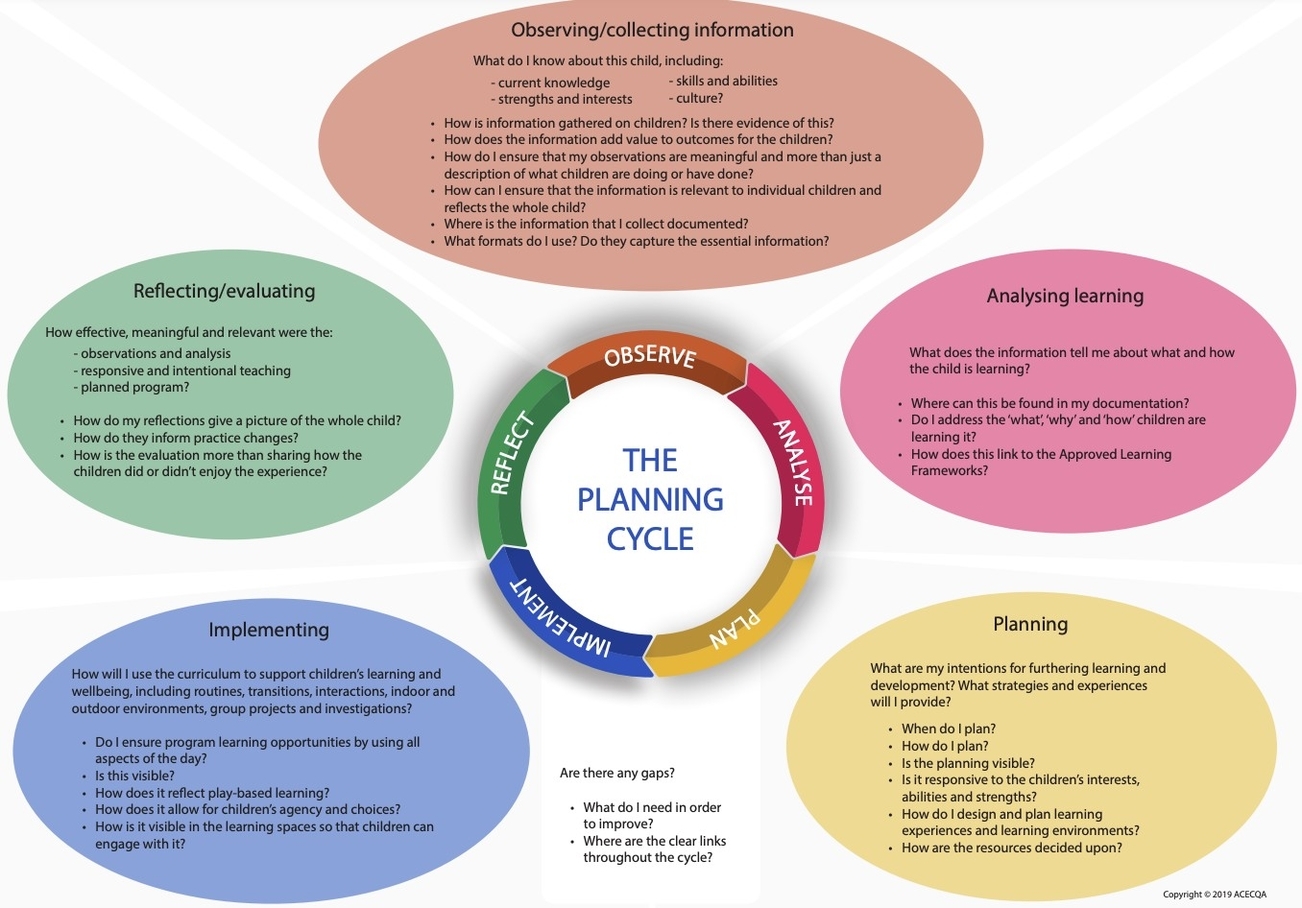
The planning cycle is a process that is used in early childhood education to develop and implement effective curriculum. The cycle consists of four steps: observation, analysis, planning, and implementation. The first step of the cycle is observation, which involves looking and listening to children to gather information about their interests, abilities, and needs. This information is then analyzed to determine what learning and development is taking place. The second step is planning, which involves using the information gathered during the observation and analysis stages to plan the next steps in supporting children’s learning and development. The third step is implementation, which involves putting the plan into action. The final step is reflection, which involves reflecting on the effectiveness of the plan and making any necessary adjustments.
Observation is a critical first step in the planning cycle. It is through observation that teachers can gain valuable insight into a child’s zone of proximal development, which helps them to determine how best to scaffold that child’s learning. Ongoing observations also help teachers to discover each child’s baseline knowledge, which can be used to develop curriculum that supports children’s play and learning in a developmentally appropriate manner. By taking detailed notes and recording objective facts, teachers can recognize each child’s individual pace, temperament, capabilities, interests, and needs. This vital data can then be used to meet children where they are at developmentally and map out where they need to go by intentionally setting reasonable expectations and goals.
The analysis stage of the planning cycle involves questioning what learning and development is taking place to make meaning of what has been observed. During this stage, teachers use the information gathered during the observation stage to identify patterns and themes in children’s play and learning. They also use this information to determine what children already know and what they need to learn next. This information is then used to develop curriculum that is thoughtfully planned, challenging, engaging, developmentally appropriate, culturally and linguistically responsive, comprehensive, and likely to promote positive outcomes for all young children.
Planning is the third stage of the planning cycle. During this stage, teachers use the information gathered during the observation and analysis stages to plan the next steps in supporting children’s learning and development. This involves selecting materials and resources that will fascinate, intrigue, challenge, and engage the children. Teachers must also consider the environment, routines, everyday resources, and even the skills and knowledge of the educators who work with the children. The curriculum should be thoughtfully planned to promote
